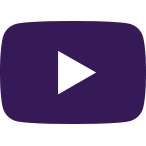At Asthma Australia, we know health professionals play a critical role in our mission to help people with asthma to live freely.
We thank you for your knowledge, expertise and assistance to increase community awareness and provide direct support to people with asthma and those who care for them.
We help health professionals by providing training courses and asthma management resources, as well as sharing the latest asthma news through our Asthma link newsletter.
Need to refer a patient for further support? Find more information below.
Access the new Severe Asthma and COVID-19 resource for MAb – based care for consumers, pharmacists, and health professionals here.






